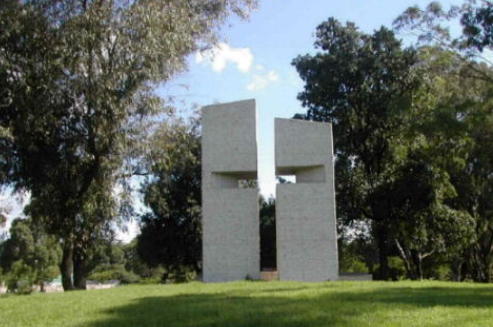First permanent settlers from Poland came to present Republic of South Africa at the beginning of the 19th century. In majority, they were emigrants from Prussian Partition. Trappists were invited to provide spiritual assistance to Poles who worked at railway construction site in the vicinity of Johannesburg and established a parish in Braamfontein district (Johannesburg centre) at the end of the 19th century. In 1920’s and 1930’s, the majority of immigrants to the South Africa was o Polish and Jewish origin. During the World War II, over 12,000 Polish soldiers were hospitalized in the Union of South Africa. What is more, South Africa accepted a group of over 500 Polish children, orphaned during the war, from the Great Britain. Initially, they were housed at a mission in Oudtshoorn, close to the Indian Ocean. Following the war, they settled all over the country in order to continue their education and find work. During the post-war period, Poles immigrated to the South Africa in small numbers, mostly from the UK and several other “western countries”. The number of immigrants increased only after 1980.[1]
It is estimated that there are 11-12 thousand members of Polish community in South Africa (including first and second generation), with about 5,000 people living in Gauteng province (Johannesburg, Pretoria and surrounding cities).[2] It is the largest congregation of Poles in South Africa. Even though sporadic immigration of Poles to South Africa still exists, systematic efflux of Polish-origin citizens has been visible for over 10 years now. People move back to Poland and they leave for other popular countries, like Australia, the UK, the United States or Canada.
Poles (from Poland or Polish-origin professionals from developed countries) do still come to South Africa, but lately they have come mostly for several-year contracts with huge international companies.
Older generation of Poles is mostly integrated with local communities due to work. They came to South Africa as professionals, specialists in their own fields, often recruited during the apartheid period. Younger generation is an integral part of the country. The have completed their secondary, and sometimes university-level, education there. Often, they have less trouble communicating in English or Afrikaans than in Polish.
Following the collapse of apartheid system in 1994 and change to socio-economic policy by new governments, a number of Poles lost their jobs in national or private-owned companies, sharing their lot with other Caucasian South Africans. Some of them have established their own companies and created new workplaces as a result. Others try to take part in slowly developing trade between Poland and South Africa.
Larger Polish community centres in South Africa – Johannesburg, Cape Town, Pretoria, Durban – have their own organisations for Polish-origin people and, sporadically, non-Polish sympathizers. Those are mostly Polish associations and parishes. Polish community priests come mostly from the Society of Christ Fathers for Poles Living Abroad – missionaries who work at Polish communities all around the world. Another congregation open to Polish community is Mary Immaculate Convent, localized in Johannesburg (where they run nursery and primary school and teach religion to children) as well as KwaZulu-Natal and Eastern Cape provinces.
Just as in the case of other Polish community centres around the world, South African organisations aim to retain national, cultural and social connection between Poles, cultivating Polish traditions at the same time. They cooperate with the Embassy of the Republic of Poland in Pretoria and they are involved in activity of the Polish Heritage Foundation in South Africa. They celebrate anniversaries of the most important events from the history of Poland, like Constitution of May 3, 1791 and the National Independence Day. What is more, they organise social events, like New Year’s Party or Engineers’ Ball.
One of the major events for Polish community in Johannesburg is the Warsaw Flights Commemoration Ceremony, commemorating South African airmen who delivered supplies for Poles during the Warsaw Uprising. The ceremony takes place at the Katyn Memorial and involves representatives of city authorities, military forces and pilots who took part in those events – each year their number decreases.
Many Poles living in South Africa has performed extraordinary service for both Poland and the Republic of South Africa.
Photo ©Martin Urry. Katyn Memorial in James & Ethel Grey Park.


